Matador Network's Blog, page 727
December 21, 2020
Strange items TSA confiscated 2020
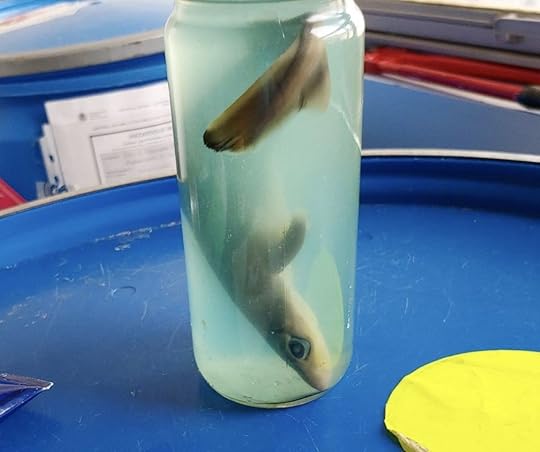
It’s one thing to get a too-large tube of toothpaste confiscated by TSA, but quite another to have your military smoke canister or slingshot taken away in public. While the latter occurrences might sound relatively rare, they’re more frequent than you might think. Even though far fewer people traveled this year due to COVID-19, bold passengers are still trying to sneak banned goods through airport security. For a dose of hilarity as we head into the new year, you can check out TSA’s Instagram account, where there are photos of some of the more unique confiscated items, along with funny captions.
Among the bizarre confiscated items are a slingshot discovered at Raleigh-Durham International Airport. While it might not be the most efficient means of inflicting damage on fellow passengers, it’s prohibited nevertheless. Channeling Bart Simpson, TSA wrote in this caption, “Ay, caramba! Don’t get all bart out of shape about forgetting your krusty ol’ sling shot in your carry-on. It’s just not worth having a cow over, man.”
View this post on Instagram
Small island in England job
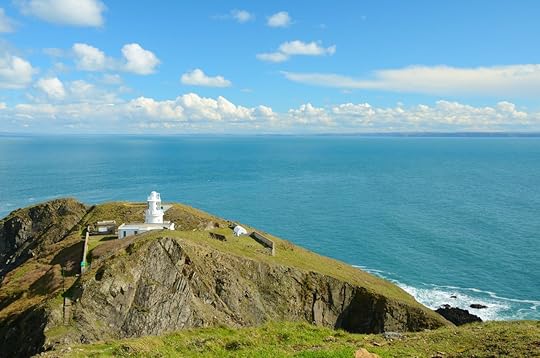
Remote living is all the rage right now. To take that concept to the extreme, you can jet off to this small island off the coast of southwest England called Lundy. The island, located 11 miles off the coast of North Devon and known for its conservation and sustainability work, has five open assistant warden positions that need filling. The jobs are unpaid, but housing is provided for free.

Photo: Google Maps
The wardens’ chief responsibility is monitoring the island’s seal and bird colonies, which is a dream job for anyone interested in wildlife conservation. Two assistant wardens are needed for seabirds between April and July, and two for the Atlantic gray seals between July and September. One assistant ranger is also needed between April and October.
Since the work will take place outdoors, in a variety of weather conditions, and workdays are long, candidates should prepare for a rather rugged experience.
The island is home to the largest seabird colony in southwest England, with an abundance of guillemot, kittiwake, razorbill, Manx shearwater, and puffins. You won’t find any cars on the island, and properties have no TV, radio, or telephones. There is, however, a tavern that serves as the center of the island’s social scene.
Lundy Island was purchased in 1969 by businessman Jack Hayward, and given to the National Trust. It’s now one of the UK’s most important wildlife havens.
To apply, email the island warden by February 5, 2021. 
More like thisWellnessHow to bathe like the Romans in southwest England
The post This tiny Island off the coast of England is looking for five wardens for 2021 appeared first on Matador Network.

New Zealand has vaccine surplus

New Zealand continues to be the world’s role model amid the COVID-19 crisis. The country has already garnered international praise for its ability to contain the COVID-19 outbreak within its borders, and now, Prime Minister Jacinda Ardern says they’ve purchased enough vaccine doses to distribute them to neighboring countries for free.
In addition to already securing 750,000 doses from Pfizer, and four million from Johnson & Johnson, the country added AstraZeneca and Novavax to the list for an additional 18.3 million doses. Since the population of New Zealand is just 5 million, it expects to have three times as many vaccines than it actually needs.
In a press release, Ardern said, “We now have agreements in place with four providers, covering three different types of vaccine technology and we have secured more than enough doses to cover our entire population plus the Pacific.”
According to NPR, the free doses will be provided to Tokelau, the Cook Islands, Niue, Samoa, Tonga, and Tuvalu. The country is also committing $65 million to ensure Pacific countries have access to the vaccine and an additional $10 million to a global commitment to help lower-income countries around the world get access. 
More like thisFood + DrinkQueenstown is just as good a place to relax as it is for adventure sports
The post New Zealand bought too many COVID-19 vaccines, so it’ll give them to neighboring countries for free appeared first on Matador Network.

Icelandic leaf bread traditions

The Icelandic landscape is undeniably stunning: Steel gray mountains covered in moss jut out from emerald green plains populated by wild horses. The beauty is also rough, harsh, and rocky — not exactly land that’s amenable to farming. Long, frigid winters make growing most crops, other than tubers like turnips and potatoes, difficult. Wheat is especially tricky to cultivate. So Icelandic people had to come up with a way to stretch the little flour they did have — whether it was purchased from traders in neighboring Denmark or cultivated at home. The result of their industriousness is laufabrauð, known as leaf bread or snowflake bread in English.
Laufabrauð likely originated in the north of Iceland near the Westfjords region. The first written recordings of these thin, round sheets of bread appeared in 1736 when it’s referred to as “candy” for Icelanders. It’s likely much older than that, but there’s no written mention of laufabrauð until the 18th century. It was around this time that Icelandic people were finally able to acquire affordable tools for grinding their own grains into flour for bread. Still, it took a lot of work, and grain remained a scarce resource. In order to make it last through tough winters, home bakers rolled the dough out into thin circles — literally making it stretch as far as possible.
Flour isn’t a commodity that needs to be hoarded in Iceland anymore, but you can find families all over Iceland who make leaf bread around Christmas.
Many families gather the first sunday of Advent — November 29 — to prepare large batches of laufabrauð, which are then stored in cookie tins until they’re eaten on Christmas. According to Saveur, some people joke that the only time men help out in the kitchen is when it comes time to decorate the leaf bread.
The intricate patterns, which were originally designed to highlight how valued bread was among poor families who could only afford to prepare it for special occasions, are created using a tool called a laufabrauðsjárn, or leaf bread iron. Once the bread has been rolled out paper thin — some say it needs to be thin enough “that you can read a newspaper through it” — and the decorations have been added, laufabrauð is deep fried until it’s crispy. The moniker leaf bread might not actually refer to the pattern on the bread but the fact that it’s rolled out until it resembles the samel crispy thinness of a leaf. In the modern era, some families use sunflower or vegetable oil. However, traditional leaf bread is fried in lamb fat. Once it’s finished frying in the oil, it’s flattened on a wooden boar called a laufabraudshlemmur. At Christmas dinner, the bread is served alongside a main course of smoked lamb, or hangikjöt — a traditional Christmas Icelandic dinner.

Photo: Great British Bake-Off/Channel 4
Icelandic food enthusiast Esther Martin-Ullrich writes on her blog Why’d You Eat That that laufabrauð recipes are passed down from mother to daughter, but ingredients follow a similar pattern: Leaf bread is often seasoned with caraway, one of the most beloved spices in Icelandic cooking (Brennivín, Iceland’s signature schnapps drink, is also flavored with caraway). One other fascinating ingredient traditionally used in the preparation of leaf bread is called deer antler salt, which is exactly what it sounds like: salt ground from the antlers of deer. It was used as a leavening agent for the bread (baking soda is obviously more common today). It can be found in Sweden, too, where it’s used to help a Swedish flatbread called hönökaka rise.
Leaf bread isn’t a niche Christmas activity either, although it takes some skill to create. It’s famous enough throughout Europe that the Great British Bake Off used leaf bread as a technical challenge during its 2019 Christmas special. This beautiful style of bread isn’t just good — it’s also art, and it reminds Icelandic families of a time when it was possible to treasure the holidays even in the leanest times. 
More like thisFood + DrinkHot Dr Pepper was once America’s holiday drink of choice
The post Iceland’s laufabrauð is one of the world’s most beautiful Christmas breads appeared first on Matador Network.

Winter solstice around the world

Winter solstice, which welcomes back the sunlight after long days of darkness, is a holiday celebrated throughout the world. Though often thought of as a northern European holiday, traditions honoring the winter solstice can be found around all corners of the world, spanning from China to Peru. Everyone wants a way to enjoy the fact that light will return after short, dark days. Read on to discover how cultures honor the longest night of the year and all that is to come with special food, candles, and more.
1. Shab-e Yalda — Iran
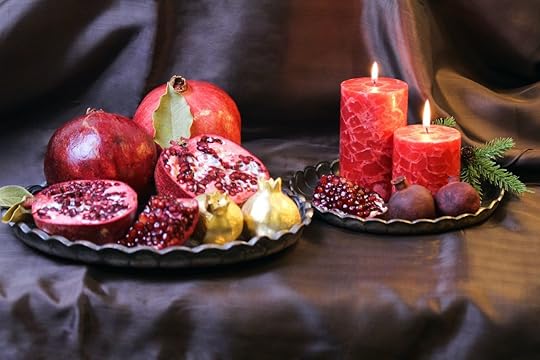
Photo: Raheleh Khatami/Shutterstock
Held over December 20 or 21, Yalda — or “birth” — is a Persian holiday celebrated by family gatherings that last all night. These meetings include poetry readings (especially of poems by 14th-century Persian poet Hafez), candle lightings, and feasts with the last of the summer’s fruits such as pomegranates and watermelons. Also known as the Birth of Mithra or Shab-e Chelleh, this holiday has been observed for centuries, and celebrates the birth of Mithra, the goddess of light. Though modern-day Iran is predominantly Muslim, ancient Persian holidays such as Yalda have survived, morphed into a contemporary celebration.
2. Dongzhi — China

Photo: ToNDeTT/Shutterstock
This holiday literally translates into “when winter arrives” and is said to welcome positive energy for the upcoming year. Also observed on December 21, the Dongzhi festival is celebrated not only in China, but also in parts of Japan, Korea, and Vietnam. In China, the holiday is celebrated by families gathering and eating tangyuan, which are sweet glutinous balls of flour symbolizing reunion. All hope for a brighter year in the upcoming calendar, and many Chinese people believe Dongzhi is when they turn a year older, rather than on Chinese New Year.
3. St. Lucia’s Day — Sweden

Photo: Sussi Hj/Shutterstock
Held on December 13, St. Lucia’s Day is a beautiful festival of lights that honors the Christian saint and martyr, Lucia. Especially beloved by children, each town picks their own St. Lucia to parade around with a wreath of (now electric) candles on their head. Dressed in robes of white, children process singing traditional songs. Used as a signal for the beginning of the Christmas season in Scandinavia, St. Lucia’s Day is observed in the home with coffee and baked goods such as lussekatter, also known as saffron bread.
4. Soyal — Hopi People, Arizona, USA

Photo: Colin D. Young/Shutterstock
The Soyal solstice ceremony of the Hopi nation welcomes back the sun to the world with dances, prayers, and storytelling. Held on December 21, Soyal is the beginning of the Kachina season, which are guardian spirits. These spirits can help humans positively if shown respect. Kivas, underground rooms used for sacred ceremonies, are also opened on Soyal. Overall, Soyal is meant to bless the upcoming year, including agricultural ventures, homes, and communities.
5. Dongji — South Korea

Photo: ungsu han/Shutterstock
December 21 starts the holiday of Dongji in South Korea, which runs until January 4. During Dongji, considered the little new year of South Korea, Koreans eat red bean porridge called patjuk to mark the arriving year. Those who eat the porridge are said to grow older by a year. Koreans wear red, the color of good luck, during Dongji. Literally translated as “the extreme of winter” it is said to be good luck for the upcoming harvest if it is cold on Dongji. Some people spread red beans around their homes to ward away evil spirits.
6. Newgrange gathering — Ireland

Photo: MNStudio/Shutterstock
In Newgrange, Ireland, people gather to witness the passage and chamber of the 5,200-year-old stone tomb fill with light for exactly 17 minutes during the winter solstice’s sunrise on the morning of December 22. A lottery system is used to choose who will be lucky enough to see this wonder, said to celebrate light over darkness. Older than Stonehenge and the Pyramids of Giza, Newgrange is located in the Boyne Valley of Ireland with an equal amount of history and mystery.
7. Toji — Japan
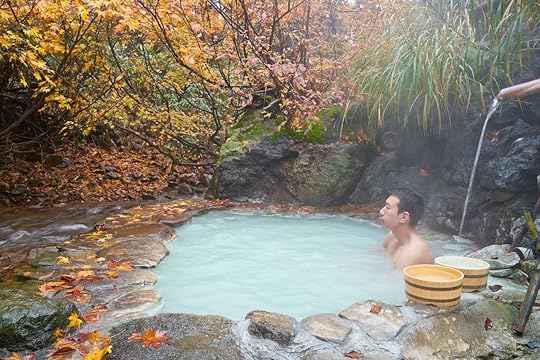
Photo: Burin P/Shutterstock
Specifically celebrated to bring luck to farmers for the upcoming year, people light bonfires on Mount Fuji, as well as take baths with yuzu, a citrus fruit believed to ward off sickness. Japanese people eat special foods like kabocha squash, which is thought to bring good luck. Many travel to onsens, traditional Japanese baths, to purify themselves for the upcoming year. Like many other winter solstice celebrations, the event occurs on December 21.
8. Inti Raymi — Peru
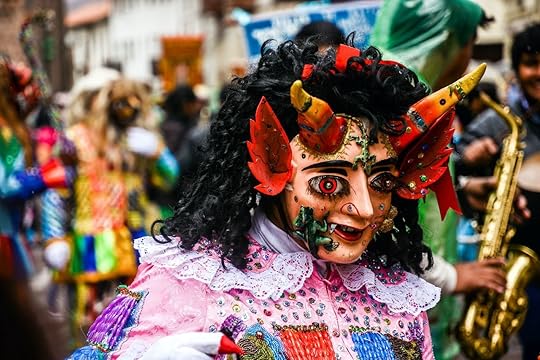
Photo: Alice Bensi Photography/Shutterstock
Celebrated in June for the southern hemisphere’s winter solstice (around June 21), this Incan holiday was marked by fasting and offerings to the god of the sun, Inti. The main procession included a parade of cloth-wrapped ancestral mummies, where plenty of chica, Incan beer, flowed. Once banned by the Spanish inquisition, the holiday has been revived, though it no longer includes a promenade of mummies. The current festival includes a parade with costumes and mask-wearing that begins with an invocation to Inti.
9. Burning the Clocks — Brighton, England
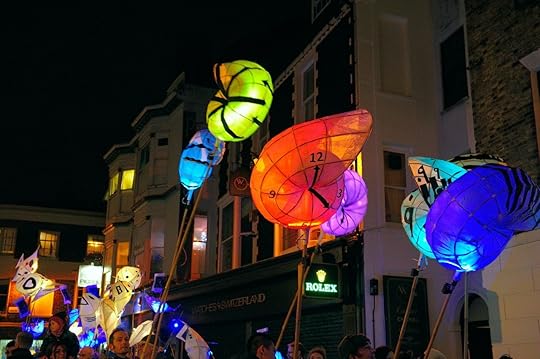
Photo: De Vicky Jirayu/Shutterstock
A modern-day winter solstice festival, this yearly festival on December 21 includes a parade, bonfire, fire show, and burning of clocks to represent the passing of time. A carnival-like atmosphere, the Burning of the Clocks is meant to be an antidote to the consumerism of Christmas. All lanterns are held up by withies, or willow canes, which symbolize the hopes and dreams of the coming year. The procession ends at the oceanfront with a bonfire. 
More like thisFestivalsFlower crowns, maypoles, and midnight sun make Sweden’s Midsummer pure magic
The post Candles, yuzu baths, and red-bean porridge: 9 ways the world celebrates the winter solstice appeared first on Matador Network.

Hawaii’s Kilauea volcano

Amidst all Hawaii’s natural beauty, it’s easy to forget there’s also an element of danger. The active Kilauea volcano that sits on Hawaii’s Big Island erupted on Sunday around 9:30 PM for about an hour and was followed by a 4.4-magnitude earthquake.
View from the western rim of Kīlauea Caldera. Lava is erupting from a fissure in the NW wall of Halemaʻumaʻu crater and cascading into the deepest part of the crater, which had been occupied by a water lake (now replaced with a growing lava lake). pic.twitter.com/VKIFA1Npr0
— USGS Volcanoes
December 18, 2020
How to bike the Pan-American Highway

The thin air of the high Andes made cycling even relatively flat ground surrounding Lake Titicaca difficult to traverse. At 12,500 feet in elevation, crossing terrain that would be an easy pedal closer to sea level takes an immense amount of energy. After slowing to catch my breath, I glanced up ahead. I could see the arch I would soon pass under as I left Peru behind for new adventures in Bolivia. Approaching the arch, I leaned my bike against the customs building and went inside.
I quickly found myself in front of the officer who would stamp my passport and — if all went well — grant me entrance to Bolivia. I held a tense breath as the officer counted on his fingers to determine if I overstayed the 90 days allowed by my visa. He stopped counting at 82 days, en route from Alaska to the tip of South America along what’s known as the Pan-American Highway, a 19,000-mile hemisphere-spanning route. My relief was visible as he proceeded to stamp my passport.
Taking a lifelong passion for cycling to the next level
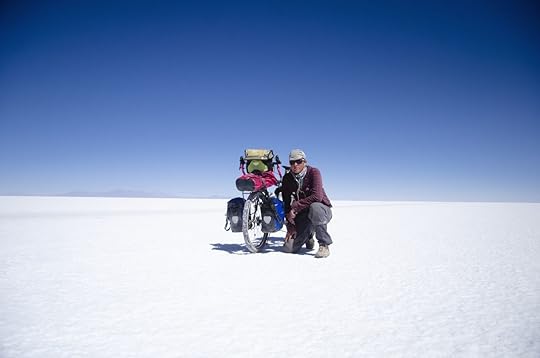
Photo: Natalie Corbett
I’ve been big into cycling for most of my 35 years. From a young age, I found freedom in being on two wheels. And that feeling is something that has persisted, if not grown with me, into adulthood. The idea of traveling long distances and camping along the way had always been on the periphery. After graduating from university in 2012, I took my first long bike trip across the western United States.
It being my first-ever bike tour, I was incredibly nervous. I had never attempted anything like this before. On this trip, I learned what it meant to stealth camp (the process of camping at unmarked backcountry spots), how to pack, what NOT to pack, and how to push myself beyond what I thought was possible. I got to explore the western states at my own pace and by my own power. I felt empowered and liberated. While I made many mistakes along the way and suffered through wind, rain, and pain, I was hooked.
I started planning my next big trip almost immediately upon returning and eventually settled on cycling the entire Pan-American Highway from Prudhoe Bay, Alaska, to Ushuaia, Tierra del Fuego, Argentina — a trip that would take me to places I had never heard of over the better part of two-and-a-half years. En route, I would cross nearly every type of geographic setting, across towering mountains and through major metropolises, twice crossing US-Canada borders before pedaling south through the plains east of the Rockies towards Mexico.
In the years leading up to my departure, I spent countless hours researching places I wanted to go, things to avoid, and what documents and preparation I would need to cross the borders into 17 different countries. In addition to the US, Canada, and Mexico, the Pan-American Highway passes through the whole of Central America, crosses continents into Colombia, and heads down the western edge of South America through Ecuador, Peru, and Chile before cutting east into Argentina.
In total I’d experience seasons on both ends of the global spectrum — summer in Alaska and summer in Patagonia, with winters ideally spent in warmer climes. Though, as I’d see firsthand, much as the sun shines on Mexico year-round, the snow lives in the high country at all times, and weather can come out of seemingly nowhere to disrupt what I’d expected to be a smooth day.
I finally set out on my adventure in the summer of 2017.
Embarking on a country-hopping cycling journey
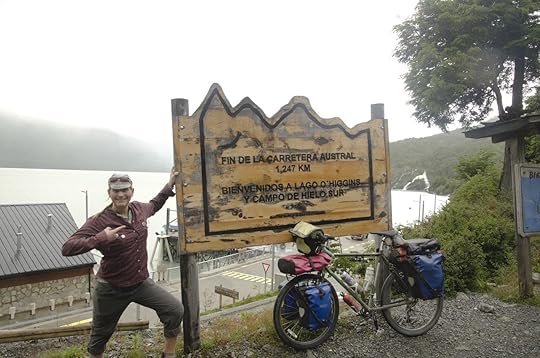
Photo: Natalie Corbett
Planning for a trip like this doesn’t stop once your adventure begins but continues non-stop as you progress in your travels. My route was never fixed. Every night I would look at my maps, both digital and paper, searching for areas to camp the following day, places to refill food and water, and cool landmarks to view or learn a little about the local history. I would often choose several camping spot options, one at a shorter and longer distance so I could easily adjust my daily plans based on weather, my energy levels, and my overall desire to “try hard” on any given day. Giving my body enough time to acclimate to the daily grind of pedaling for eight to 12 hours, day-in and day-out in the wind and rain, up mountains, and through clouds of mosquitoes, was imperative.
Cycling across the Andean plateau I’d experience moderate weather in the Altiplano (high plain) and pass through Boreal forest and past Patagonian lakes. The ability to shed a layer (or add one) would be imperative, as would having waterproof options and a rain fly for the tent. Still, I learned early on that I packed too much and needed to adjust the placement of things.
Knowing what food to bring on a short trip is not all that different than in a large one; while the allotted budget may be different, the goal of carrying just enough to get by stays the same. Preparing your food for a trip this large is not something that you can really do once and then stick to for the entire trip. You have to account for variations in the seasons and regions you are visiting. When I was in Alaska and the Yukon, I would routinely have to carry multiple days’ worth of food at a time because distances between towns are far greater there than in more densely populated areas.
My diet consisted mainly of eating boxes of Pop-Tarts for their high sugar and calories during my daily rides and a bag of pasta for dinner with a box of Cheez-Its for dessert. This persisted until I reached Mexico and began to supplement my energy at the many roadside taco stands. For much of the trip I was able to get by carrying only enough for one or two meals at a time because I could replenish my supplies as I rode for the day.
Preparing for international border crossings
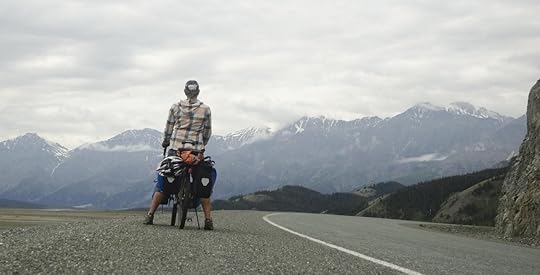
Photo: Natalie Corbett
For the most part, the administrative part of crossing borders by bicycle is the same as in a vehicle or arriving via air. After spending a month exploring Alaska I neared Canada and had my first experience with this. The most complicated thing about this border was giving away the marijuana I had on me and couldn’t legally transport across the international boundary. This first jaunt across borders was easy, helped by friendly relations between the two countries.
In my case along the Pan-American Highway, the majority of border crossings were as easy as this first one. I would bike up to the building, get in line, get stamped out, bike a few meters into the next country, get stamped in, and proceed on with my day. Until I reached Bolivia, the most time I had spent changing countries was about an hour.
There, in the high Andes gasping for oxygen, was when my luck finally ran out.
Getting out of Peru had proved easy enough. After I passed underneath the arch into Bolivia and made my way to customs, I had a feeling that I was in for an interesting ride. In researching the trip, I had learned that I would need somewhere around $200 to buy my visa-on-arrival for Bolivia, and I was prepared to spend that much. But it turned out that was not all I needed.
The customs official wanted to see proof of a return flight to the US (which I didn’t have) and a reservation and address of the hotel I was staying in during my visit. I learned the hard way that writing in “wild camping” doesn’t count — I tried. After some negotiation and a fair amount of frustration, I was introduced to a man named Juan who would prove to be exactly the person I needed to meet. Not only was he able to take and print my official photo for my visa, but he also helped me reserve a hotel room and book a flight home while spending less than 15 Bolivianos (just over $2). I went back to the customs office and was swiftly given a visa and stamped into the country, thus ending a few tense hours in between countries.
Lesson learned: Research diplomatic relations between two border countries — and your home country — beforehand, and know which countries require visas for entry, and any proof of reservations.
Reflecting on life-changing journey
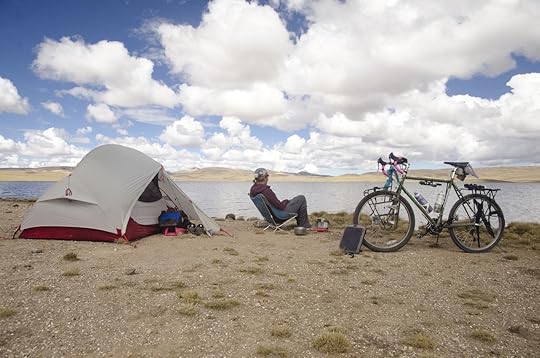
Photo: Natalie Corbett
I am a white transwoman from the United States — the first transgender woman to bike the Pan American highway. Your cultural mileage — in terms of privilege, overall experience, and ease of travel — may vary depending on your country of origin, ethnicity, skin color, and gender identity. One cannot plan for every eventuality and happenstance to occur on a commute to work, let alone over the course of two-and-a-half years and 30,000 kilometers. For me, this trip reinforced that life requires an open mind and an open plan.
To get the most out of a trip like this you have to have a flexibility that allows you to deviate from your original idea and make spur of the moment decisions to turn left instead of right, or to follow a man named Juan to the little shack nearby where an old laptop and printer can make any document you need appear.
When I was planning my adventure and told people about what I was attempting, many would tell me that this trip would “change me” — as if that was not something I had considered. Of course this trip was life-changing. In going on a multi-year and multi-country bike trip, I found more internal peace in my life. I also found patience that you can only know by measuring distance in days. I’ll never know what I would be like today if I hadn’t gone on this epic bike ride south. I do know that you don’t have to go on a grand tour to have a life-changing experience; it’s just one of many ways that you can take time to slow down and look within yourself. 
More like thisCyclingCycling solo across the USA is more doable than you think
The post Cycling the entire Pan-American Highway and finding inner peace along the way appeared first on Matador Network.

Christmas in Iceland

Whether you’ve been naughty or nice, you know that the worst thing rosy-cheeked St. Nick may subject you to is a lump of coal instead of shiny presents. Granted it’s a disappointing sight on Christmas morning, but it’s still better than what impish Icelandic kids have to reckon with, namely rotten potatoes delivered by 13 wicked santas, the possibility to be eaten by a giant bloodthirsty cat, or even be slowly cooked in the cauldron of a cave-dwelling ogress. From creepy tales full of terrifying characters based in pagan folklore to merry and wholesome traditions, here is what makes Christmas in Iceland undoubtedly unique.
The scariest Christmas family in the world
The main characters that make up Iceland’s Christmas story are all part of the same unusual household: Grýla the matriarch; her cat Jólakötturinn; and the Yule Lads, her 13 children.
Grýla
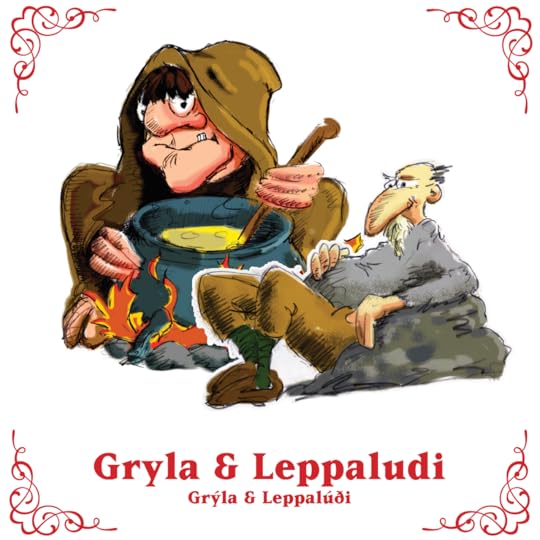
Photo: Keflavik International Airport/Facebook
Grýla is the Christmas ogress that would make any children keep on the straight and narrow. The legend goes that every year at Christmas time, she comes down from the mountain cave that she inhabits with Leppalúði, her lazy second husband (she supposedly ate the first one), and her 13 devilish boys to kidnap naughty children. Note that she’s not all that bad — children who apologize for being disobedient are said to be spared from being cooked in her cauldron and eaten. For her exterior to match her nasty personality, Grýla is usually represented with ugly physical features and shabby, ragged clothes.
Grýla is not a newbie on the Yule scene. She’s mentioned in texts dating as far back as the 13th century. Although back then, she was not directly associated with Christmas but with a mid-winter celebration during which families gathered to feast.
While Grýla has a fierce reputation and undoubtedly scares children, sculptures of the evil matriarch can be found in public places such as malls or even the Keflavik International Airport, and children don’t hesitate to hop into her cauldron for a funny holiday photo.
Jólakötturinn

Photo: Carolyne Parent/Shutterstock
A black cat that looks more like a monster from Halloween than Christmas, Jólakötturinn is a clothing-obsessed giant Christmas kitty. Jólakötturinn is Grýla’s cat, and he too comes down from his hiding place at Christmas, but his focus is children who are not wearing new clothes. According to tradition, Icelandic children who would do their chores would get a new piece of clothing while those who were lazy didn’t. Jólakötturinn prowls around Iceland’s cities, towns, and villages and looks into peoples’ windows to find the children who don’t sport new clothes — and proceeds to eat them.
As with Grýla, although Jólakötturinn sounds like a terrifying creature, there is a giant lit-up sculpture of him in Reykjavik that children like to check out and take photos with.
The Yule Lads

Photo: Keflavik International Airport/Facebook
Grýla’s 13 mischievous boys are known as the Yule Lads. Although they are often referred to as “Icelandic Santas,” they are more troll-like than magical-old-man-like. They do tend to have a beard like Old Nick, but the resemblance stops there. They are often depicted wearing filthy clothes and looking dirty and wicked. They live in the mountains with their vicious mother and come down 13 days before Christmas to reward children who have been good and punish those who misbehaved. Every night during that time, children put a shoe on the window sill of their home for the Yule Lads to either stuff it with treats or rotten potatoes. Each Yule Lad has a distinct personality and a recurring naughty habit, as reflected in his name. Although they used to be much scarier, the Yule Lads’ stories have been softened over the years and they are now beloved by Icelandic children.
The 13 Yule Lads are named:
Door Slammer
Spoon Licker
Pot Licker
Sausage Swiper
Candle Beggar (He steals candles)
Window Peeper
Skyr Gobbler (He loves skyr, i.e. Icelandic yogurt)
Bowl Licker
Stubby (He is short and steals food from pans)
Sheep-Cote Clod (He harrasses sheep)
Gully Gawk (He steals cow’s milk)
Door Sniffer (He seeks out food in peoples’ houses with his large nose)
Meat Hook (He steals leftover meat)
Christmas in Iceland is not all about scaring children

Photo: Ghing/Shutterstock
While the characters that make the Icelandic Christmas story are dark and frightening, the celebrations are joyful, cozy, and family-focused.
To get a firsthand report on what it’s really like to celebrate the holidays in Iceland, we talked to Michelle Spinei, an American who is married to an Icelander and who has been living in Reykjavik for four years. She has experienced Christmas in Reykjavik numerous times and explained to us what makes it so different from celebrating the holidays in the US.
Spinei explains that Christmas in Iceland starts on December 24, and the holiday season finishes on January 6, but the illuminations and decorations go up in November when there is very little daylight as a way to keep everyone’s spirits up.
According to Spienei, in Reykjavik on December 24 the shops stay open longer than usual to accommodate late shoppers, but the city center is also a meeting point for families. People stroll the capital’s streets and run into cousins, friends, etc. and enjoy a little social time outside their homes. However, there’s no staying out for long as 6 PM is when Christmas officially kicks off and dinner starts. People around Iceland wait for the bells of the famous Hallgrimskirkja Church to mark the hour to sit down with their immediate family and get the feast started (the ringing of the bells is televised around the country).
The epiphany (or Þrettándinn in Icelandic) on January 6 is the last hurrah of the holidays in Iceland. It is celebrated with bonfires (lit by children with candles) around which Icelanders gather and sing traditional songs, as well as with fireworks.
Culinary traditions
While Icelandic Christmas officially starts on December 24 at 6 PM and is celebrated with meat (often smoked lamb, smoked ham, or even ptarmigan) and traditional pickled red cabbage, a day before, on December 23, þorláksmessa is observed by eating fermented fish.
Þorláksmessa is the day when the patron saint of Iceland, Saint Thorlak, is honored with kæst skata, i.e. fermented skate. While we’re all very familiar with Iceland’s fermented shark, which these days has become a tourist must-try, fermented skate remains under the radar of most outsiders.
Spinei explains that while she has tried fermented shark in Iceland, fermented skate has a much stronger flavor and is a difficult dish to enjoy for a non-native. The fish bones are gelatinous, and the smell is reminiscent of what you’d find in a chlorinated pool, but for many Icelanders, fermented skate is a delicacy. Some enjoy kæst skata at home (although some apartment buildings ban their residents from cooking it because the smell is too disturbing), but many order it in restaurants on this very special occasion.
Presents and Jólabókaflóð

Photo: wavebreakmedia/Shutterstock
People also open their presents on December 24. After the 6 PM holiday feast, family members gather around the tree and check out their gifts, which are often books.
Spinei explains that books are extremely popular gifts in Iceland. The nation has a very rich, centuries-old literary tradition and even became a UNESCO City of Literature in August 2011. The literary scene is so strong that in 2012 NPR reported that “Iceland publishes more books per capita than any other country in the world, with five titles published for every 1,000 Icelanders,” and Icelanders buy and borrow books from the library in staggering numbers every year.
The majority of the books in Iceland are sold in the fall, on the run to Christmas in a phenomenon called Jólabókaflóð or the “Christmas Book Flood.” In early fall, each resident of Iceland gets the Okatidindi, a free catalog of newly published books, in their mailbox and starts planning their Christmas presents.
After discovering which literary gem they got, Icelanders spend the rest of December 24 reading and continue to do so on December 25 for a low-key and super cozy Christmas. 
More like thisReligionThe 7 creepiest Christmas characters from European folklore
The post In Iceland, Christmas is celebrated with a bloodthirsty cat, 13 mischievous Santas, and their evil mother appeared first on Matador Network.

This safari company will give you credits in exchange for charity donations
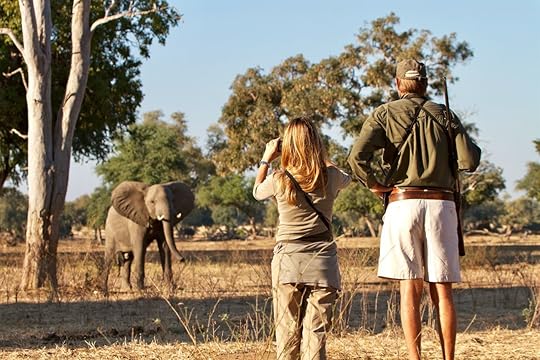
The only thing better than donating to charity is donating while simultaneously being rewarded with travel credits. Travel company Next Adventure, which creates custom African vacations for travelers, has launched an initiative to help conservation and community programs across Africa that are suffering from the lack of tourists.
Throughout December the company is highlighting different projects in East and Southern Africa for donations. When you donate, Next Adventure will match any contributions up to $500, and also give you a matching credit toward one of its trips between now and the end of 2022.
According to the website, “African safaris simply wouldn’t be possible without local community leaders and passionate conservationists working to protect these wild and precious places. While Next Adventure is focused on planning creative, custom safaris, we’re also committed to sustaining a positive impact. For 25 years, we’ve partnered with the most responsible ecotourism brands and operators in Africa. In lieu of traveling, we encourage you to learn more about the projects our clients and partners support. If you’re moved by their work, send them a note, follow and share their progress, and make a small contribution if you can.”
A full list of programs in need of donations is available online. It includes worthy causes like the Rwanda Wildlife Conservation Association, which is dedicated to saving the endangered gray crowned cranes in Rwanda, and the Children in the Wilderness nonprofit, whose goal is to facilitate conservation through education. 
More like thisSustainabilityFor local-owned African safaris, community and conservation come first
The post This safari company will give you credits in exchange for charity donations appeared first on Matador Network.

LGBTQ travel ideas for 2021
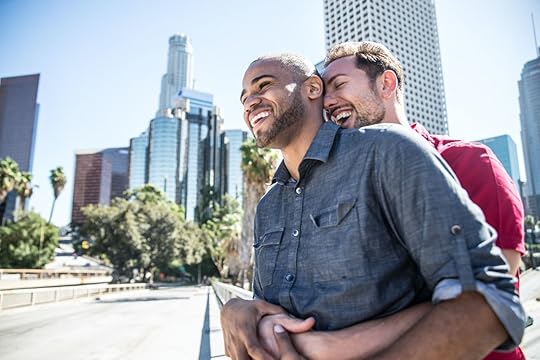
Travel in 2021 will be the definition of queer. It will defy norms, and the only thing to expect is the unexpected. But unlike 2020, which taught us the dangers of expectations as we tore up our itineraries, this coming year brings hope for LGBTQ travelers. With that being said, traveling again will give LGBTQ folx plenty to ponder and two things will be most important: the impact visiting another place has on their wellbeing and on the communities they visit. With questions of what next year will bring and current travel trends in mind, here are the top tips and places LGBTQ travelers should consider in 2021.
1. Celebrate queerness with your chosen family
In-person Pride celebrations suffered in 2020, and next year, the LGBTQ community might make up for lost time. It’s unclear whether parades in May and June will occur, but if you’re looking to plan a trip, assume the later the festival, the better chance it has of happening.
Visit Copenhagen for World Pride
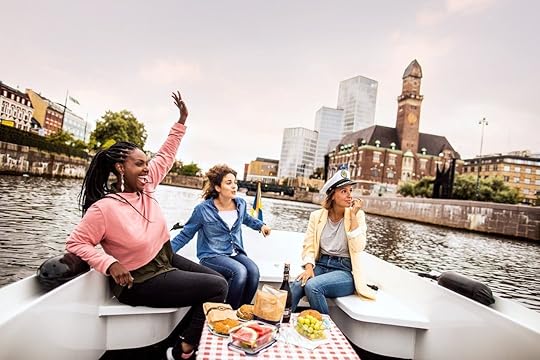
Photo: Copenhagen 2021/Facebook
The tiny city known for tasteful Scandinavian simplicity hopes to be the site of Europe’s biggest glitter explosion this summer. World Pride, an eleven-day event organized by the international organization InterPride, is expected to attract over half-a-million people to the streets of Copenhagen and nearby Malmö from August 12-22. Since you can’t have too much of a good thing, the city will also host EuroGames from August 18-20. This LGBTQ sporting competition features 29 different events like water polo, ballroom dancing, and even chess. The smart queen’s gambit for this midsummer gala? Book your hotel in advance — rooms are bound to sell faster than the Pfizer vaccine.
World Pride aside, Copenhagen should still top the list for LGBTQ travelers. Denmark became the first country to recognize same-sex partnerships in 1989 and continues to be a progressive bellwether for LGBTQ rights around the world. Studiestræde reigns supreme as the city’s go-to gayborhood, but it doesn’t matter if you’re walking by the pastel-painted townhouses of Nyhavn, smoking hash with the hippies of Christiania, or enjoying a Michelin-star meal in Nørrebro: All are welcome in Copenhagen no matter the time of year.
Turn up the heat in Atlanta

Photo: Atlanta Pride Committee/Facebook
They don’t call it Hotlanta for nothing, and this fall, it’s time to see what all the fuss is about. Georgia’s Big Peach will host a series of queer festivals starting with Atlanta’s Black Pride, a boisterous celebration that culminates in Piedmont Park on the Sunday of Labor Day weekend. Next up is the International LGBTQ+ Travel Association, which will hold its 37th global convention at the W Atlanta-Midtown from September 8-11. The Out on Film festival, which usually takes place at the end of the month, will follow. In October, Atlanta Pride will button nearly two months of LGTBQ celebrations with a festival that regularly attracts over 300,000 rainbow-clad revelers. Based on the current timeline for vaccinations, this will be one of the country’s largest Pride events once it’s safe to gather in groups again.
Known as the LGBTQ capital of the American South, Atlanta is a worthy queer-cation destination outside of Pride festivities. Most queer life revolves around Midtown, but visitors will find LGBTQ enclaves stretching from Buckhead’s swanky streets to Decatur’s suburbs. The growing population of young folx who call these neighborhoods home are cultural trendsetters responsible for making Atlanta a hotbed for street artists, gastronomes, and even up-and-coming TikTok influencers.
2. Make the most of the outdoors
Choosing open-air adventures over indoor experiences is key for LGBTQ travelers until it’s completely safe to gather in groups. On top of the emotional benefits of spending time outside, it’s also one of the safest places to be during the on-going health crisis. Activities like hiking, diving, snowshoeing, and sailing are some of the best low-risk ways to enjoy the outdoors — all of which can be experienced in the wilds of these two queer-friendly locales.
Soak up the sun Costa Rica

Photo: KikoStock/Shutterstock
Costa Rica scores tens across the board for LGBTQ travelers this year. In May, the country made headlines by becoming the first Central American nation to legalize same-sex marriage. Between March and August, local tourism officials implemented new health and sanitation protocols that earned the nation a “Safe Travels” stamp from the World Travel and Tourism Council (WTTC). Now, with borders reopened for countries that meet Costa Rica’s visa and COVID-19 requirements, it’s time for Vitamin-D deficient queer folx to start planning a getaway.
There are plenty of places to escape the madding crowd in Costa Rica, but LGBTQ travelers should head to Manuel Antonio on the Pacific coast. With a 1,700-acre national park and 136,000 acres of protected marine territory, you could go an entire trip without seeing a single soul — save for the Central American squirrel monkeys, toucans, and sloths that call this lush jungle peninsula home. If you’re on safari to see fellow queer people, check out Hotel Villa Roca — a luxury lodge that caters to LGBTQ travelers. La Playita, the local gay beach, is only accessible at low tide, so take extra precaution on the hunt for fellow speedo connoisseurs. Those who want to throw caution to the wind should head to Playa La Macha, a nude beach where the only thing you’re encouraged to wear is your mask.
Let out last year’s angst by screaming into Iceland’s abyss
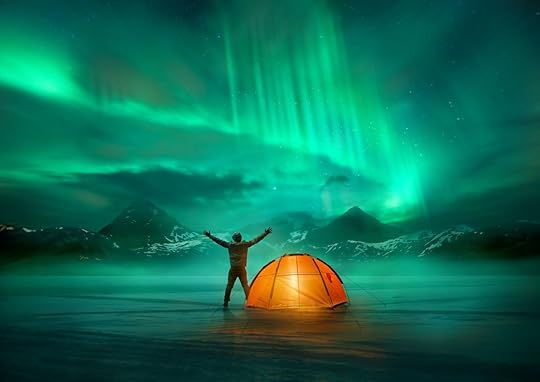
Photo: solarseven/Shutterstock
This past year taught LGBTQ travelers lots about pent-up frustration. Some gay folx blew their lids by throwing illegal indoor raves while others went to dangerously-overcrowded beach parties. Most of us screamed into our pillows.
With the promise of travel on the horizon, it’s time to stop smothering your face in memory foam and start planning a vacation somewhere that wants you to scream into the void: Iceland. The country’s current tourism campaign encourages visitors to “come let it out for real” in front of the country’s bubbling hot pots, ice-capped volcanoes, and roaring waterfalls. Pink Iceland, an LGBTQ-run tour operator, offers private excursions to help tourists find the perfect place to belt into the abyss.
Although Iceland is one of the most LGBTQ-friendly nations in the world, you’re unlikely to find a sizable LGBTQ nightlife scene unless you visit during an event like Rainbow Reykjavik, Reykjavik Bear, or Reykjavik Pride. Pride is usually scheduled for the second week in August.
If you want to be a part of queer history in 2021, the boutique cruise company Vacaya will make waves as the first all-LGBTQ group to circumnavigate Iceland on an eight-day cruise in early September. And for those who don’t think eight days is enough, Iceland’s new long-term work visa will buy you six months so you can shout into as many fjords as your heart desires.
3. Relax on an all-inclusive Mediterranean cruise
The only cruising available to LGBTQ travelers in 2020 was of the pre-Grindr Meat Rack variety, but in late 2021, it’ll (hopefully) be time for boat lovers to throw on a swimsuit and hit the poop deck once more. After nearly a year stuck in port, cruise ships plan to set sail in the coming months, and major cruise companies have already seen an uptick in bookings for the second half of 2021.
For boys in search of a Bacchanalian boat tour, check out Atlantis’ Mediterranean cruise from August 30 to September 7. This eleven-day journey on the world’s newest ship, Odyssey of the Sea, will sail through cerulean waters to Italy, Greece, Turkey, and Corsica. If you’d rather cruise with the Sapphos set, try Olivia’s lady-centric trip to Greece, Cyprus, and Israel from October 16-23.
Both trips allow travelers to see a large swath of the Mediterranean without the hassle of booking a bunch of airline tickets, lugging your bags through airports, or even worrying about where to eat dinner. After the year we’ve all had, it’s time to lay back and let others make the big decisions.
4. Support queer communities hit hard by the pandemic
Safe spaces for queer folx must be supported by queer folx if they’re going to survive, and in 2021, LGBTQ travelers should consider how their money can positively impact businesses and destinations they hold dear.
See what’s new in New York City

Photo: Little Island
New York City was forced into hibernation for much of 2020, but nap time will be over starting next summer. Times Square will buzzing with Broadway’s late-May reopening, restaurants will lure in the epicurious with elaborate outdoor dining options, and green spaces like the new floating island at Pier 55 will welcome packed crowds.
But with an estimated 60 percent of the city’s restaurants and bars projected to close in the coming year, it’s impossible to predict what LGBTQ life in New York will look like once it emerges from the pandemic. Queer haunts like the Hell’s Kitchen-based Therapy bar and 9th Avenue Saloon have already shuttered, and iconic LGBTQ outposts like Stonewall and Cubby Hole are struggling. Glitter-clad crowds at Brooklyn’s queer-friendly House of Yes might’ve danced their last dance. Many queer artists fled the city while others struggle to pay their astronomical rent.
Still, the reason New York became an early epicenter of the pandemic will be the same thing that helps the LGBTQ scene rise from the ashes: proximity. The sheer amount of creativity bouncing around this urban jungle will lead to a rebirth in 2021 that queer travelers will want to experience.
Travelers should plan a trip in late summer or early fall when LGBTQ beaches like Jacob Riis and Sandy Hook are still crawling with the city’s prettiest sun worshippers. With a slow return to tourism and cheaper-than-usual deals to be had, this might be the only time when travelers can actually afford to “heart” NY.
Explore Cape Town’s diverse topography
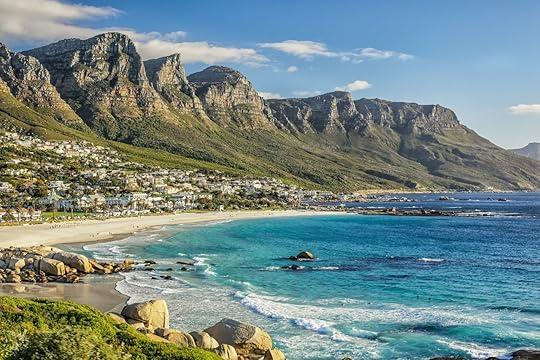
Photo: Dereje/Shutterstock
Cape Town is the South African equivalent of San Francisco. Not only does it boast beautiful rocky mountains, an expansive rugged coastline, and easy access to the country’s prime wine region, it’s the most gay-friendly city on the continent. American visitors should take a particular interest this year — it’s one of the few foreign LGBTQ hotspots where they’re currently welcome. As of November 2020, South Africa opened its borders to all international travelers who can present a negative COVID-19 certificate upon arrival and abide by local health protocols.
Beach bums will want to visit Cape Town before the end of February when warmer weather brings speedo-clad boys to Clifton Third, the defacto gay beach. Autumn, which stretches until June, is ideal for wildlife lovers who want to hike around Table Mountain National Park and top the Twelve Apostles’ peaks. LGBTQ life within the actual city revolves around Somerset Strip, a street passing between the Green Point and De Waterkant neighborhoods, and draws large crowds year-round.
Like many economies around the world, Cape Town has struggled during the pandemic. South Africa’s economy reportedly shrank by more than half during the second quarter of 2020, and once it’s safe to travel, locals will welcome tourists with open arms.
5. Plan a US beach stay to celebrate the pandemic’s end

Photo: Micha Weber/Shutterstock
Infectious disease expert Dr. Anthony Fauci thinks the United States might reach herd immunity by the end of next summer if the on-going vaccination campaign goes as planned. If that’s true, queer travelers could get a head start on booking trips to beachside gaycation destinations.
New York’s hottest sandbar, Fire Island, will burn brightest around the annual Pines Party (July 23-25), which features a beachside rave that runs until dawn. Provincetown’s Carnival (August 15-21) will be Cape Cod’s most carnal week of the 2021 season, too. With costume balls, parades, art fairs, and parties, this themed week’s unmatched frivolity might be enough to send you back into quarantine even once the pandemic ends.
For early summer travel plans, opt for small-town LGBTQ destinations, where the focus is on tiny gatherings and outdoor adventures. Maine’s artsy-fartsy Ogunquit, Pennsylvania’s quaint New Hope, and Arkansas’ surprisingly liberal Eureka Springs are all queer-friendly getaways without the rowdy affairs you’ll find in popular spots like Fire Island. 
More like thisLGBTQ TravelThe most uplifting LGBTQ stories from 2020 worth celebrating
The post What is next for LGBTQ travel in 2021? appeared first on Matador Network.

Matador Network's Blog
- Matador Network's profile
- 6 followers



